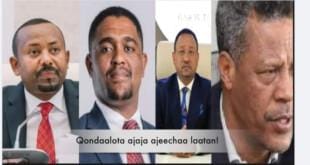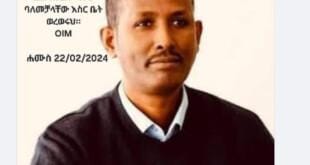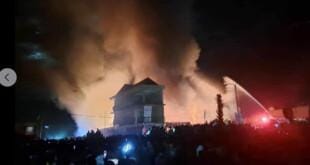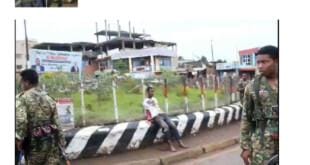Firehiwot Guluma Tezera
Potentially, Oromia is one of the richest countries in Africa. Agriculture is the means of livelihood for
more than 90% of the population. Because of favourable climate and rich soil, many types of crops are cultivated and normally there is little need for irrigation. Oromo farmers have contributed to world agriculture by cultivating and developing some of the world’s crop plants. The main cash crops are coffee and chat (a stimulant shrub). Coffee, a major cash earner for many countries, has its origin in the forests of Oromia and neighbouring areas. It has remained the chief export item, representing more than 60% of the foreign earnings of successive Ethiopian colonial regimes.
So, because of the fertile lands and resources it has, Oromia is particularly targeted by Wayne regime to grab the land. . Ethiopian government continues forcefully evicting Oromo farmers and other indigenous peoples from their ancestral lands and leasing them to national and transnational investors without their consent and with no compensation. Hundreds of thousands of Oromo farmers and other indigenous communities continue losing their farming and grazing lands they have owned for centuries and thrown out on the streets exposing their families and extended families to humiliation, starvation and death. In many instances family heads are given a 30 day notice to evacuate from their land. Those who refused to comply with the short notice faced intimidation, beatings, arrests, and in some cases death.
The current destructive land-grab policy of the regime is a continuation of the amassing of personal wealth of the members of the ruling elite at the cost of destroying the livelihood of the families of indigenous Oromo. It has nothing to do with investment or development as the government tries to mislead the international community. Since 1996, the total area of agricultural land transferred to the investors is 4 million hectares. 72000ha farm land is grabbed by foreign investor of bio-fuel crop in 2008 to establish castor crop as out grower schemes on land used by 84000 to124000 smallholders in 240 peasant associations (PAs) in East and West Haraghe provinces. A total land transferred to investors will be 7 million hectares of agricultural land by the end of 2015. It is estimated all together that millions of acres of cultivable land have already been leased to foreign investors. The tendency is to double or triple in the five Transformation plans, as the TPLF regime recently started publicly to defend its land grab policy as economic imperative.
The weyane regime considers the Oromo land a personal toy of the authorities. Investments are expanding at the expense of the lives of millions of households evicted from their land, their only source of livelihood. Millions of hectares of land have been distributed to the so called investors, the majority of whom are from the ruling tribe of Tigray, evicting the local people in Oromia. The families of those evicted households are pulverized into daunting poverty subsequently. This is the tragic history behind the proliferating large scale commercial estate farms, sugar factories,
hydroelectric dams, cement factories and large-scale real estate industries and flower farms. These schemes have not only evicted the people from their only sources of livelihood but also caused tremendous depletion of natural resources and environmental pollutions there by further worsening the social problems to the local people.
For instance, the flower farms covering hundreds of thousands of hectares in the Rift Valley lakes region of Oromia have not only dismantled the livelihood of thousands of smallholder farmers but also spoiled the four big lakes in the province- the Koka, the Batu, the Langano and the Abijata lakes. The flower farms discharge chemical waste directly to the lakes. Terrestrial and marine animals are affected by these chemicals. Cattle grazing in the peripheries of these farms have been found dead several times, a large number of birds found dead by the lakes, fish found dead on the shores.
In the name of investment, the weyane regime has placed Oromia under the market forces of globalization so as to sell or lease its fertile lands to international land grabbers. To facilitate the transfer of lands to the buyers or leasers, colonial regime of weyane has been violently evicting the Oromo villagers from their villages and farmlands. In this way, the Oromo people are dispossessed of their land, the land they lived on for generations. And the Oromo people’s lives have been threatened by the theft, plunder, sell or lease of their land and resources. The local people are denied access to their fertile and high-valued lands and forced to marginal lands with no yields. The consequences of these are poverty and hunger.




